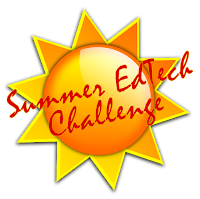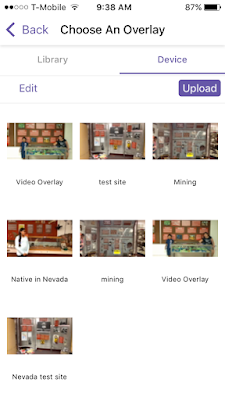Blogging is one of my favorite activities to help students have a voice. I believe that, if implemented correctly, blogging motivates students to write more, gives them a platform to express themselves, and helps them safely establish a digital identity. I am always on the lookout for blogging resources and ideas. I've come across some pretty amazing student blogs that actually motivate me to be an even better blogger myself.
In April of this year Katharine Hale (@KatharinehHale) and Kelly Purman (@MsPurmanELA) led a webinar on blogging called Teaching Writing and Identify Through Series Blogging. This is a must see webinar for anyone interested in student blogging. In this webinar they discussed practical ways to help students build a blogging brand or identity.
I've written a little bit about this topic myself since I believe that students are motivated to blog more when they can choose a topic they are interested in. A brand for their blog, if you will. This webinar included some great tips for helping students to determine their blog identity. Here are a few things that caught my eye in the webinar.
In working with and preparing students to create their blog, there are several activities that can be done with them to help them decide on a blog theme, brand, or identity. These activities should be done before students start creating blog posts.
During her part of the webinar Kelly Purman talked about allowing abandonment. As students are working on their blog, if the ideas aren't coming or a different idea/identity comes up its okay to switch. Students don't have to maintain the blog to please the teacher - if its not something they are interested in let them try something else.
Building a blog brand/theme/identity is a big part of making blogging successful with students. I will definitely use these techniques to help students get started with their blogging in my class.
What about you? How do you get students started with their blogs? Do you help them create a blog brand or do you dictate what they must blog about?
Read More »
In April of this year Katharine Hale (@KatharinehHale) and Kelly Purman (@MsPurmanELA) led a webinar on blogging called Teaching Writing and Identify Through Series Blogging. This is a must see webinar for anyone interested in student blogging. In this webinar they discussed practical ways to help students build a blogging brand or identity.
I've written a little bit about this topic myself since I believe that students are motivated to blog more when they can choose a topic they are interested in. A brand for their blog, if you will. This webinar included some great tips for helping students to determine their blog identity. Here are a few things that caught my eye in the webinar.
In working with and preparing students to create their blog, there are several activities that can be done with them to help them decide on a blog theme, brand, or identity. These activities should be done before students start creating blog posts.
Read mentor texts
Let students read real blogs that model their topic. For example, if a student wants to create a blog about pet care, find actual blogs that do the same. Students can read them, see topic ideas, how posts are structured, and get a feel for the tone of the blog.Nudge
Use several brainstorming activities to help students decide on a theme that they are comfortable with. Katharine Hale recommends doing these as four separate lessons. Have students 1) think about their interests 2) think about what happens in their life 3) try an identity map 4) ask their peers (What do you notice about me? etc)Listen
Have conferences or conversations with students and listen to them talk about their interests. In those conversations you can hear what excites or interests them. Asking probing questions or prompting them for more information often gets them thinking and realizing what they really know a lot about.Try
I really liked this idea. Before students start working on their blog have have them create a list of 10 blog post ideas. If they can get that list then they probably have a theme they can sustain and get a lot of traction out of.During her part of the webinar Kelly Purman talked about allowing abandonment. As students are working on their blog, if the ideas aren't coming or a different idea/identity comes up its okay to switch. Students don't have to maintain the blog to please the teacher - if its not something they are interested in let them try something else.
Building a blog brand/theme/identity is a big part of making blogging successful with students. I will definitely use these techniques to help students get started with their blogging in my class.
What about you? How do you get students started with their blogs? Do you help them create a blog brand or do you dictate what they must blog about?
































